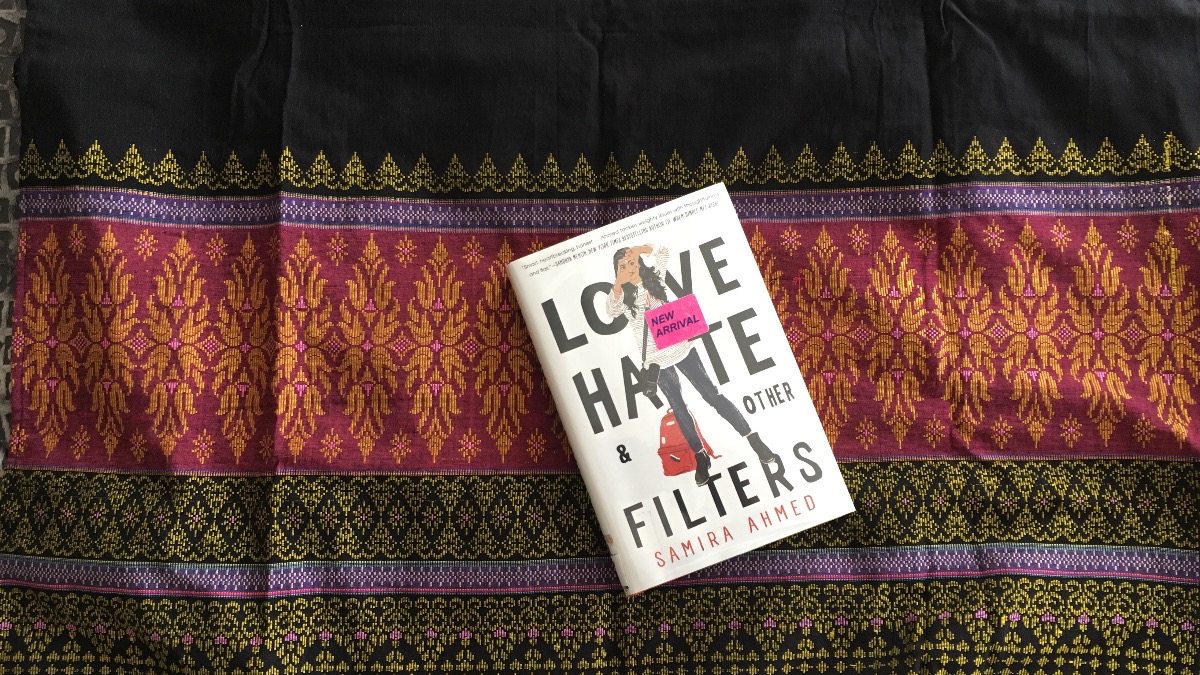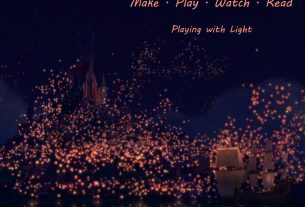
If you haven’t read Love, Hate & Other Filters, the debut teen novel by Samira Ahmed, do it. Do it now. It is, absolutely, a must-read. If you haven’t read it yet, be aware that this post has some mild spoilers (I tried to keep them to a minimum), so if you must read on, consider yourself forewarned.
Seventeen-year-old Maya Aziz, the main character in Love, Hate & Other Filters, is a Muslim-Indian-American living in Batavia, Illinois, a tiny town west of Chicago with no other Muslim families (although there are other families she socializes within the greater Chicago area). Maya’s parents, who had a “love marriage,” are protective of their daughter, and, growing up in a post-9/11 era, are apprehensive in a way beyond mere cultural protectiveness about sending their only child any further than Chicago for college. She doesn’t date, doesn’t eat pork, and other than being a little snarky toward her parents, Maya is a good person.
Thing #1 That I Love: Maya Is So Relatable
Despite her cultural differences, Maya Aziz is a normal American teen. She crushes on the captain of the football team. She is socially awkward. She has that awesome best friend who encourages her to step out of her comfort zone, and who is her biggest cheerleader. Her style is totally cramped by her parents. She is both excited and overwhelmed by the idea of college. And every little setback feels like the end of the world. And the big setbacks? Her reactions are totally believable.
Thing #2 That I Love: the Writing
Clean, crisp narrative. A strong voice. Showing not telling. Doling out pertinent information that keeps the reader engaged and informed without an obnoxious info dump. The door to Maya Aziz’s story opens slowly, you are welcomed inside, and you find yourself immersed in a world that is at once new and familiar.
Meanwhile, the brief one-page italicized interjectory chapters hint at the world beyond Batavia. These worlds will collide, dramatically, but the way it is written, this happens in a “natural” way (and I use quotes on purpose) that is at once realistic and aggravating, which I will discuss later in my “What I Hate” section.
Thing #3 That I Love: the Plot
A high school senior deciding where to go to college, the outcast pining after the captain of the football team, the overprotective parents pushing traditional values: this story has all the necessary components of a great “diverse voice” coming-of-age story. There is a comforting familiarity to these typical elements, and this book is at once an homage to these tropes and a wonderful departure from them. After all, if you’ve seen one high school rom-com (romantic comedy, for the uninitiated), you’ve seen them all. And Love, Hate & Other Filters has the feel of your typical rom-com. But this is not typical. In that regard, it is delightfully refreshing and manages to do so while respecting the cultural struggles that Maya faces.
Thing #4 That I Love: the Filters
Maya loves her video camera. She loves to make movies. This is one of her defining characteristics, and it works. But Maya the Videographer is but one of the “filters” used in the story, one of the lenses through which we can follow the story. Maya the High School Senior is another, which is different from Maya the Teen. Maya the Muslim daughter is yet another. Maya the Indian, Maya the American, Maya the Daughter, Maya the Person-She’s-Meant-To-Be are a few more. Maya is a complex character that sees the world (and is seen by the world) through different filters. And even beyond Maya, there are many different ways to regard the story, many different angles from which to shed light on the many subjects covered in this book.
Thing #5 That I Love: the Culture
Not being raised Muslim, I can’t speak to how Muslim readers react to this story (though I’d love to know). Perhaps they find her too American; I don’t know for sure. However, right from the start, I felt a kinship to Maya. The story starts at a wedding, a Muslim wedding, and everything was so familiar-—the suburban party center decorated ornately with flowers, the sounds, the clothing, the Indian food—-that I was once again reminded that these higher-level celebratory elements at the family and friend weddings I’ve attended are Indian and not necessarily Hindu in origin. It has never been something I’ve thought deeply about, but as traditions and culture get passed down from generation to generation, and as we who have grown up on the opposite side of the globe from our ancestors try to learn about our family’s past, it’s helpful not to lose sight of the big picture… that we share much in common with those who we have determined are “others.” In our quest for belonging, humans tend to segregate. These tendencies are magnified in high school (the jocks and the nerds, for example, are two groups divided, and efforts to belong to both can be difficult) and culturally (we gravitate toward those who share certain traits, be in nationality, region, or religion). This book shows Maya’s struggle with both.
Which brings us to…
The One Thing That I Hate
Do you remember that scene in “Pretty In Pink” when Molly Ringwald’s family’s business was attacked? No? How about in [insert favorite rom-com here] when the main character was told to “go back to your country” even though she was born in America? And that hilarious scene in that high school drama with a terrorist attack two hundred miles away that dredged up so much hate? No?
This book is about what happens to a typical high school student, a very realistic look at what it means to be a Muslim-American growing up today. The fact that this reality includes being racially profiled, attacked, or hated for the color of their skin stinks. The fact that far away events so impact Maya and her family comes across as “natural.” What I absolutely hate about this book is that it is so damn real. I hate that this plot line even has to exist as a piece of realistic fiction, that countless kids across the country can absolutely, undeniably identify with Maya and with everything that she’s going through. I hate that rather than being a piece of speculative adult fiction, this is a realistic story geared toward kids. Fiction is the essence of truth. The best fiction is often more real than any true account could be. Oh, how I wish that this story failed in that definition.
TL;DR: Read Love, Hate & Other Filters
At its best, fiction lets us see the world through someone else’s eyes. Or, as Atticus Finch would advise, “climb into his skin and walk around in it.” Given that much of her struggle results from the color of Maya’s skin (Egyptian, Indian, it’s all the same, right?), this is an apt description. If you’ve never stopped to consider what this post-9/11 world looks like for kids, now’s the time. Go get this book and read it.




I have just read the inspiring work written by a young Pakistani talent Samira Ahmed. She has connected different dots amazingly. She has exactly described the feelings of an innocent teen girl who is being harassed because of her color. I prefer visiting resource to read reviews about writing service to write essays like Samaira Ahmed writes.
Honestly, you have shared interesting article In which I have got to know new terms which I did not know before. I am glad to read original site information.